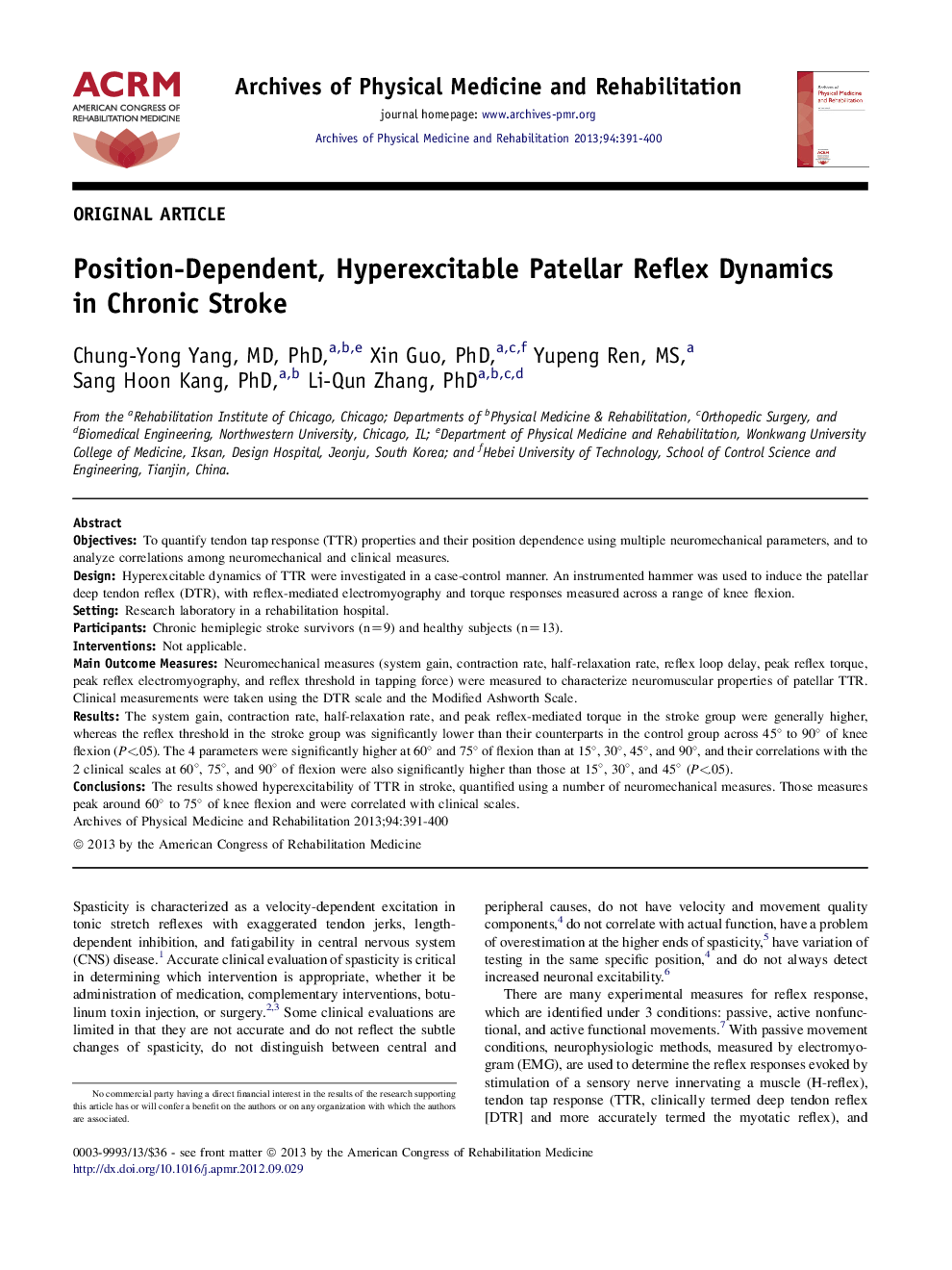| Article ID | Journal | Published Year | Pages | File Type |
|---|---|---|---|---|
| 3448914 | Archives of Physical Medicine and Rehabilitation | 2013 | 10 Pages |
ObjectivesTo quantify tendon tap response (TTR) properties and their position dependence using multiple neuromechanical parameters, and to analyze correlations among neuromechanical and clinical measures.DesignHyperexcitable dynamics of TTR were investigated in a case-control manner. An instrumented hammer was used to induce the patellar deep tendon reflex (DTR), with reflex-mediated electromyography and torque responses measured across a range of knee flexion.SettingResearch laboratory in a rehabilitation hospital.ParticipantsChronic hemiplegic stroke survivors (n=9) and healthy subjects (n=13).InterventionsNot applicable.Main Outcome MeasuresNeuromechanical measures (system gain, contraction rate, half-relaxation rate, reflex loop delay, peak reflex torque, peak reflex electromyography, and reflex threshold in tapping force) were measured to characterize neuromuscular properties of patellar TTR. Clinical measurements were taken using the DTR scale and the Modified Ashworth Scale.ResultsThe system gain, contraction rate, half-relaxation rate, and peak reflex-mediated torque in the stroke group were generally higher, whereas the reflex threshold in the stroke group was significantly lower than their counterparts in the control group across 45° to 90° of knee flexion (P<.05). The 4 parameters were significantly higher at 60° and 75° of flexion than at 15°, 30°, 45°, and 90°, and their correlations with the 2 clinical scales at 60°, 75°, and 90° of flexion were also significantly higher than those at 15°, 30°, and 45° (P<.05).ConclusionsThe results showed hyperexcitability of TTR in stroke, quantified using a number of neuromechanical measures. Those measures peak around 60° to 75° of knee flexion and were correlated with clinical scales.
